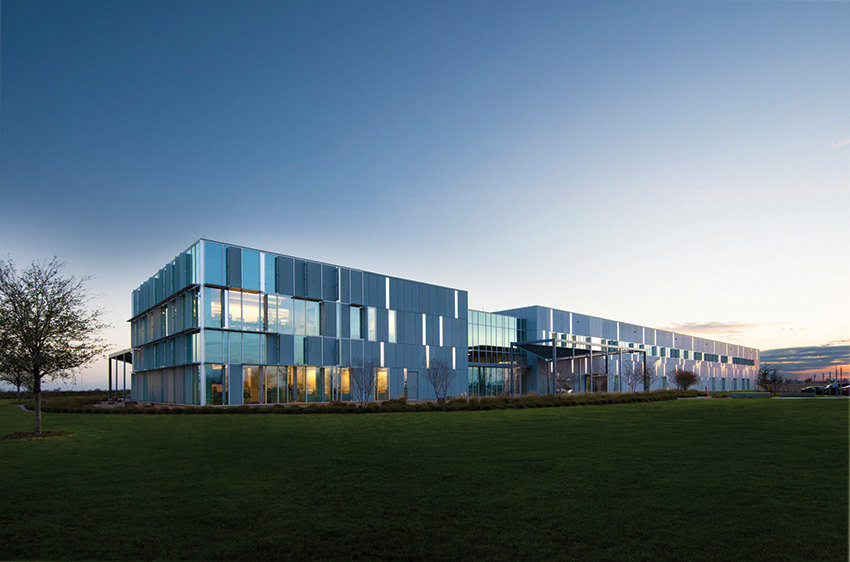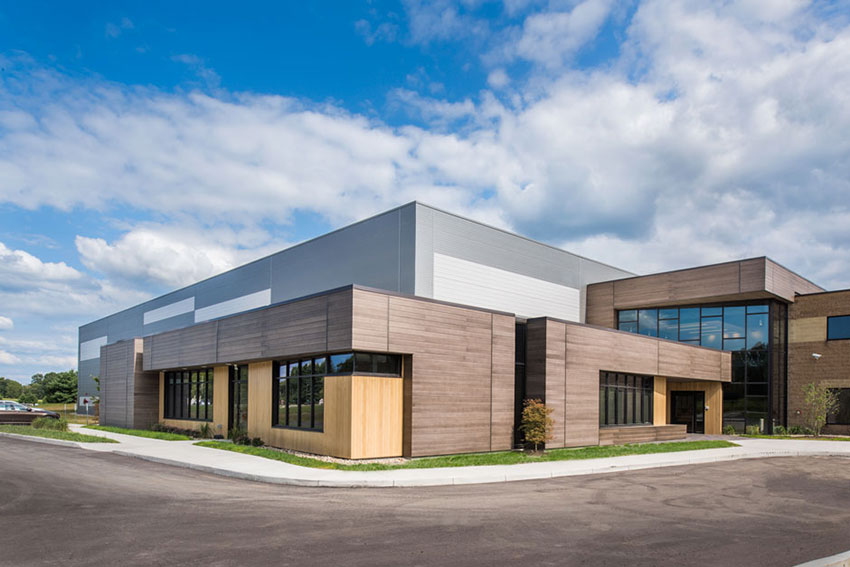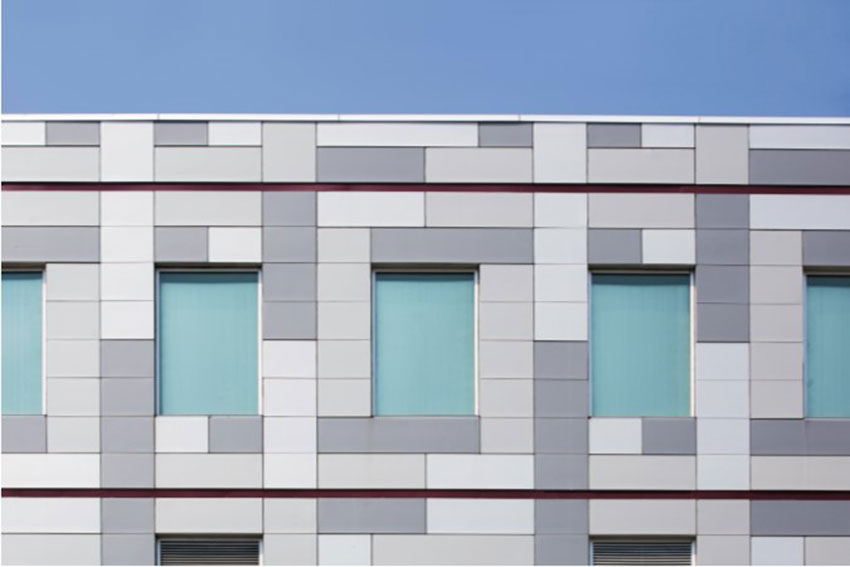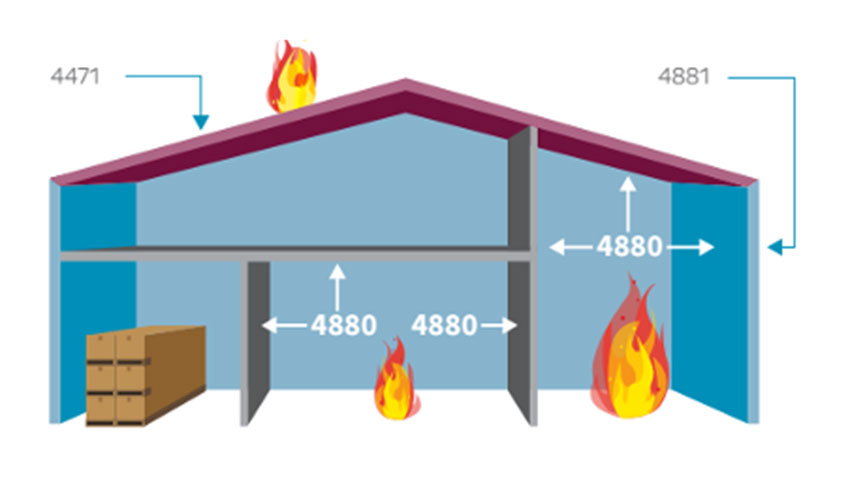Decision Point–Examining the Advantages of Insulated Metal Panels Against Tilt-Up
Learning Objectives:
- Debate the material benefits of selecting insulated metal panels (IMPs) in place of tilt-up, including design flexibility, envelope performance, and enhanced occupant comfort.
- Dissect the installation and practical advantages of selecting insulated metal panels (IMPs), including ease of transportation, crew coordination and scheduling, handling, and time.
- Calculate the energy savings resulting from improved thermal performance of insulated metal panels (IMPs).
- Delineate the attributes of insulated metal panels (IMPs) that allow them to contribute to LEED, WELL, and other sustainability programs, as well as enable them to reduce the building’s environmental impact.
Credits:
This course is approved as a Structured Course
This course can be self-reported to the AANB, as per their CE Guidelines
Approved for structured learning
Approved for Core Learning
This course can be self-reported to the NLAA
Course may qualify for Learning Hours with NWTAA
Course eligible for OAA Learning Hours
This course is approved as a core course
This course can be self-reported for Learning Units to the Architectural Institute of British Columbia
Building envelope material selections that improve building performance enable the design of a building to not only meet today’s code criteria, but also to satisfy the demands of the future. The innovations of insulated metal panels (IMPs) compare very favorably against traditional material systems. Durability, thermal performance, and energy efficiencies are a gain when using IMPs versus a system such as tilt-up concrete. Practically, using IMPs allows for simpler, safer, and cost-efficient installation and maintenance for a building. Advances in IMP technology also offer benefits for aesthetics. Selecting IMPs for a project offers a great opportunity to earn sustainable certifications, provide material health and transparency documentation, and avoid the negative environmental consequences of construction.

Photo courtesy of Kingspan Insulated Panels
With only six months to complete the DynaEnergetics building in Blum, Texas, architects avoided having to install multiple wall components, and instead were able to install the facade, insulation, and interior walls at the same time with only one installer by using insulated metal panels, saving time and staying within budget.
DEFINING IMPS
Breaking out beyond its traditional applications, architects and building owners are taking advantage of insulated metal panels’ growing architectural options, aesthetics, structural integrity, energy efficiency, light weight, and low maintenance for a wide variety of projects. As insulated metal panels move into a space traditionally dominated by tilt-up–a method of construction where large concrete panels are cast on site and then raised into position with a crane–how do their material characteristics and performance stack up for the modern building?
Meet the IMP
Insulated Metal Panels (IMPs) offer complete, lightweight enclosure systems for exterior walls and roofs. The panels combine metal skins and an insulating foam core. First developed by the National Aeronautics and Space Administration (NASA)1, these panels have superior insulating properties and their outstanding spanning capabilities and one-pass installation make them quick to install, providing unit cost savings when compared to other wall assemblies.
To deliver high-performance insulation, foam is injected, or poured, in place between two layers of metal skin. The insulation undergoes a chemical reaction, causing it to expand and bond to the metal skins, completely filling the interior cavity between the metal skins. The result is a factory-delivered, solid panel system that provides superior thermal value and resists moisture, insect, and rodent infiltration.
The most commonly used metal substrates for IMP faces are G90 galvanized steel or aluminum-zinc-coated steel, while some custom panels are made from stainless steel or aluminum. Architects are able to specify various panel insulation values, span lengths, and load/span capabilities.

Photo courtesy of Nucor Insulated Panel Group
IMPs provide temperature control for the Sima & Sons office and cold storage facility in Ravenna, Ohio. IMPs are exposed on the interior and function as the interior cooler walls, which allowed for simple, one-time wall installation for both interior and exterior.
IMPs are available in a wide variety of colors, widths, profiles, and finishes. “The realization of virtually any design for walls and roofs is possible,” says RC Antal, Director of Insulated Metal Panels for ATAS International. IMPs deliver profiled options: designers can choose walls that are ribbed, fluted, or planked. For flat walls, finishes can be flat, textured, or striated. Entire panels can also be curved and formed. Additional design features include joint reveal widths, formed corner panels, end folds and treatments, heavier gauge flat facings, and integrated windows and louver systems. IMPs are available in a variety of high-performance coatings. Another offered finish feature is embossing, which creates surface texture on metal coils.
For the interior, a typical finish is a standard polyester 0.8 millimeter─including the primer─in a light-reflective and easy-to-maintain color. United States Department of Agriculture (USDA)-compliant finishes and stainless steel also are available for required applications, such as food processing and storage.
In the field, IMPs are not only considered as the primary exterior finish, but now also are designed as the primary building envelope. Additionally, their enclosures can be clad with various secondary rainscreen materials, such as brick veneer.

Photo courtesy of Kingspan Insulated Panels
Multiple colors, sizes and patterns of Insulated Metal Panels create a striking look for this warehouse, retail and commercial building in Brooklyn, New York. Patterns like this are not available with tilt-up, a form of precast construction.
Where They’re Found
IMPs are used in virtually every building type, from offices and warehouses to healthcare facilities, manufacturing centers, transportation, education, and recreational buildings.
- Commercial and Industrial: IMPs are ideal for all types of commercial and industrial buildings including institutional, recreational, and government buildings, and manufacturing facilities. Projects from schools to retail centers to power plants benefit from the energy efficient insulation, lightweight construction, durability, and cost-effective, timely installation of single-component IMPs. IMPs also provide solutions for a variety of climate considerations, including temperature, humidity, airborne particles, and air movement.
- Architectural: Architectural IMPs have the normal attributes of those used in commercial and industrial builds, such as high insulation values, speed of build, and vertical and horizontal applications. Additionally, architectural IMPs include options such as custom shapes and widths, special custom colors and finishes, and custom fabrication, including, but not limited to, factory-bended corners, curved panels, and trimless ends. Architectural IMPs offer options that can incorporate panels that coalesce with windows, louvers, sunshades, or other integrated products to offer total building envelope solutions. Their flexibility provides architects the freedom to create unique building designs.
- Cold Storage: Insulated Metal Panels are considered the ultimate solution for climate-controlled facilities. Whether the need is for manufacturing, processing, storage, or distribution of perishable food or other materials, an IMP wall can meet the demands. Available in panel thicknesses from 2-6 inches, a wall can be designed to meet multiple specific thermal performance requirements. Additional features include the panel’s long-spanning capability, flat and ribbed-shaped panels, high-performance coatings, as well as special joint designs and details to meet safe hygiene and contamination requirements.
Insulated Roofs
IMPs form a high-performance roofing solution that offers exceptional thermal performance, unparalleled ease-of-installation, and gives the designer freedom to create building profiles rich in character. As a roofing material, IMPs provide the highest level of insulation, simplest maintenance, and longest life, coupled with the quickest installation for low- and high-rise commercial and industrial roofing applications. The two-step installation process limits worker exposure to accidents and reduces the number of steps and materials required. These factors increase the speed of installation and slash schedule downtime while providing a roof with superior insulation properties that can last more than four decades.

Photo courtesy of Kingspan Insulated Panels
IMPs provided the best thermal envelope and reduced thermal bridging for this building at Portland Community College in Portland, Oregon, contributing to the building’s LEED certification.
IMPs and the Building Enclosure
Selecting IMPs means delivering a fully integrated solution for the building enclosure, as the panels arrive on site providing a full vapor and water barrier and continuous insulation. “IMPs are star performers, delivering four control layers all in one panel,” says Antal.
IMPs provide all four control layers within a single component, meaning they do not require the use of supplemental air, water, vapor, or thermal control layers. IMPs provide a “Perfect Wall” due to the location of their control layers. Water, air, and vapor control layers are all located on the exterior of the structure, with thermal control located outboard of the other control layers. This creates optimal enclosure performance and limits issues that can plague buildings, like moisture accumulation or air transfer. Because of this construction, IMPs can be used and expected to perform in all climate zones: cold, mixed, hot, humid, dry, or marine. IMPs also work for the demands of all interior environments: office, commercial, residential, institutional, pools, museums, art galleries, and data processing centers. Depending on climate zone and special requirements, IMPs can be used with supplemental cavity insulation subject to ratios listed in the International Building Code.
IMPs can also be used as a rainscreen barrier wall system and can be integrated with other wall and roof systems while still maintaining proper control layer continuity. Because of their inherent performance, IMPs offer a streamlined choice to meet the growing body of code requirements, including safety, fire, sustainability, performance, and building health. IMPs also meet or exceed multiple sustainable design criteria that contribute toward a project earning green building certifications.

Photo courtesy of Kingspan Insulated Panels
An enhanced focus on verifying fire performance of all individual components, and components joined together as a system, has made U.S. fire testing regulations some of the most stringent.
Guaranteeing Performance: Understanding Codes and IMPs
Placing a product in a building means betting the future of the structure on that product’s performance. IMPs are subject to Chapter 26 International Building Code (IBC) requirements, including the 4471 approval standard for roofs (fire and uplift), the 4880 approval standard for walls and roofs (fire only), and the 4881 approval standard for exterior walls (fire and structural). As a metal composite material, IMPs are also governed by Chapter 14, NFPA 285 Standard Fire Test Method for Evaluation of Fire Propagation Characteristics of Exterior Wall Assemblies Containing Combustible Components. Preventing fire, and keeping any fire damage to a minimum, is a primary industry and regulatory concern. U.S. codes require that a fire test incorporates every one of the components of the wall assembly, just as the product is to be used in the field, instead of testing individual components only.
Although foam has fallen under the intense scrutiny of U.S. building codes, the scrutiny has paid off with safety. The use of IMPs containing foam plastic insulating materials, when they comply with the appropriate fire test requirements for both the components individually and the assembly itself, have been shown to exhibit excellent fire performance.


















